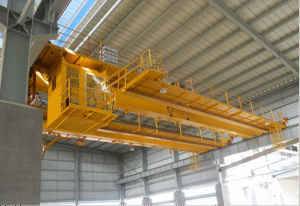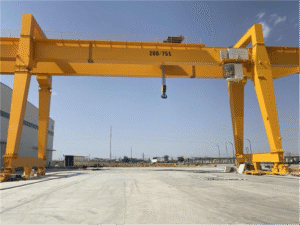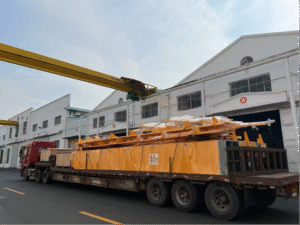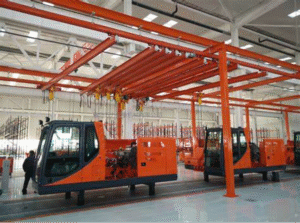Overhead cranes—also known as bridge cranes—are a cornerstone of modern industrial lifting operations. Whether in manufacturing, logistics, mining, or heavy assembly, these powerful machines help move materials safely, efficiently, and precisely.
If you’re a procurement manager or project engineer looking for a reliable lifting solution, understanding the different types, common applications, and essential safety precautions of overhead cranes is key to making the right investment.
1. What Is an Overhead Crane?
An overhead crane is a type of material handling equipment that allows loads to move along a horizontal beam, typically mounted on runway tracks attached to the building structure. It is ideal for indoor environments where lifting and transporting heavy or bulky materials is required.
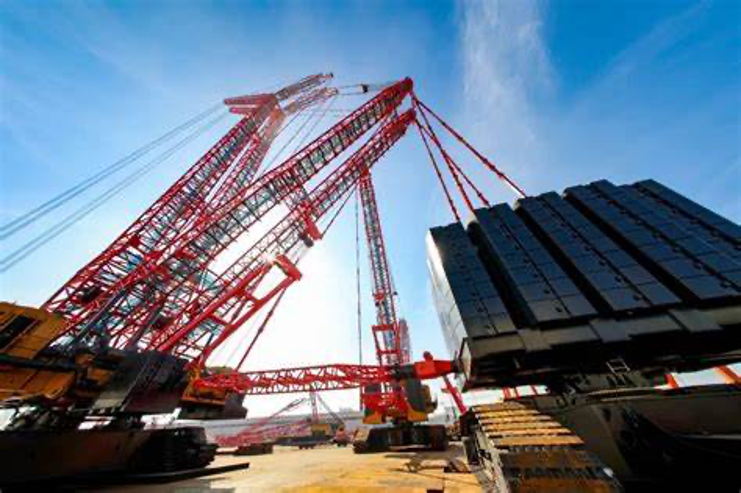
2. Common Types of Overhead Cranes
Understanding the different types of overhead cranes will help you choose the best solution for your operation:
✅ Single Girder Overhead Crane
- Lightweight and cost-effective
- Ideal for small to medium lifting capacities (up to 20 tons)
- Suitable for maintenance workshops, warehouses, and light manufacturing
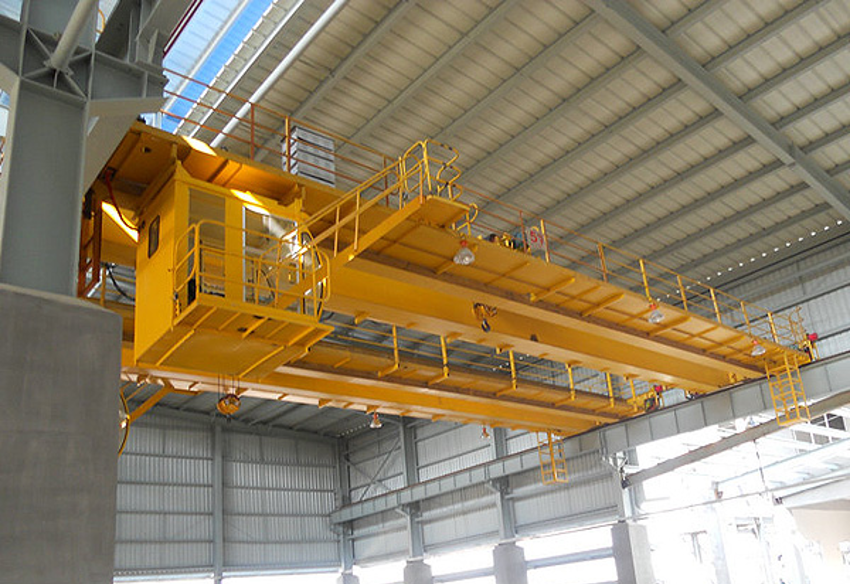
✅ Double Girder Overhead Crane
- Higher lifting capacity (up to 200 tons or more)
- Greater hook height and longer span
- Commonly used in steel plants, large-scale fabrication shops, and foundries
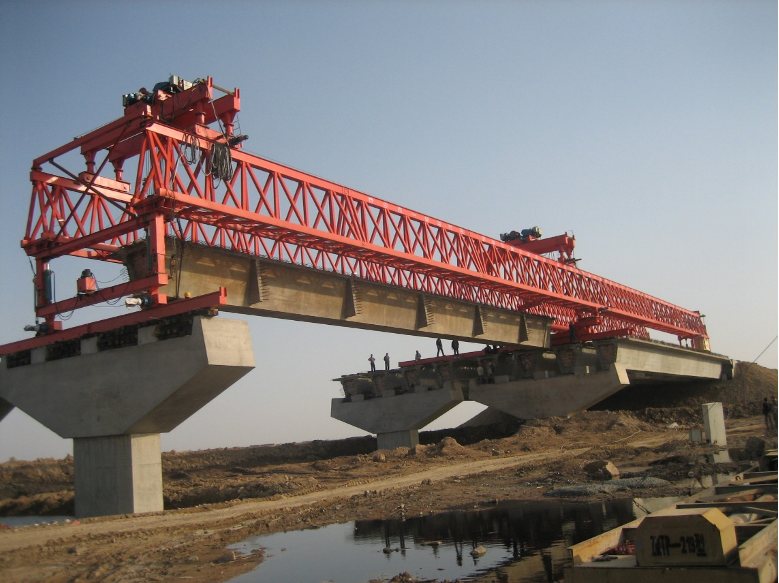
✅ Top Running Crane
- Travels on rails mounted on the top of runway beams
- Suitable for heavy-duty applications and maximum headroom utilization
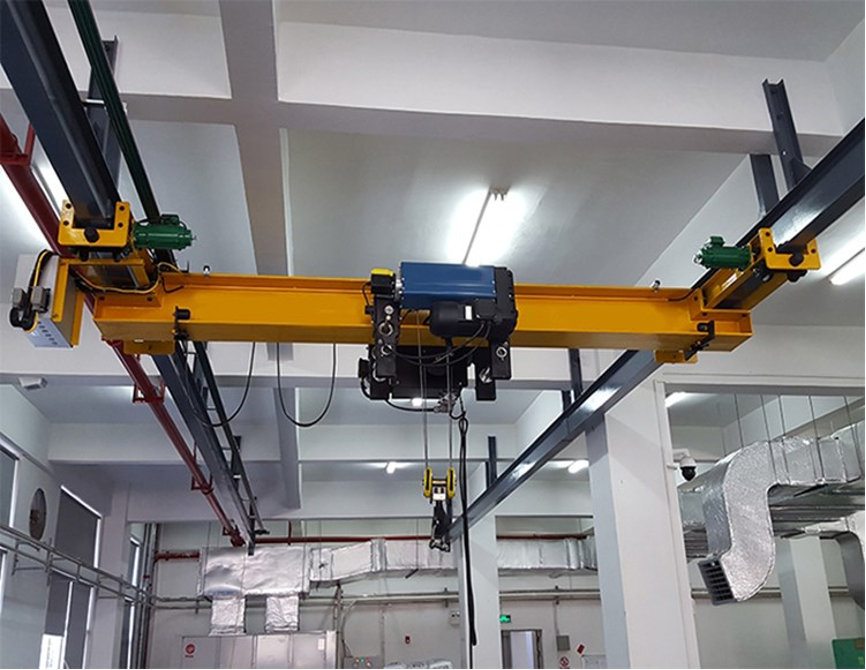
✅ Underhung (Suspension) Crane
- Suspended from the ceiling or structure
- Suitable for lighter loads and buildings with limited space
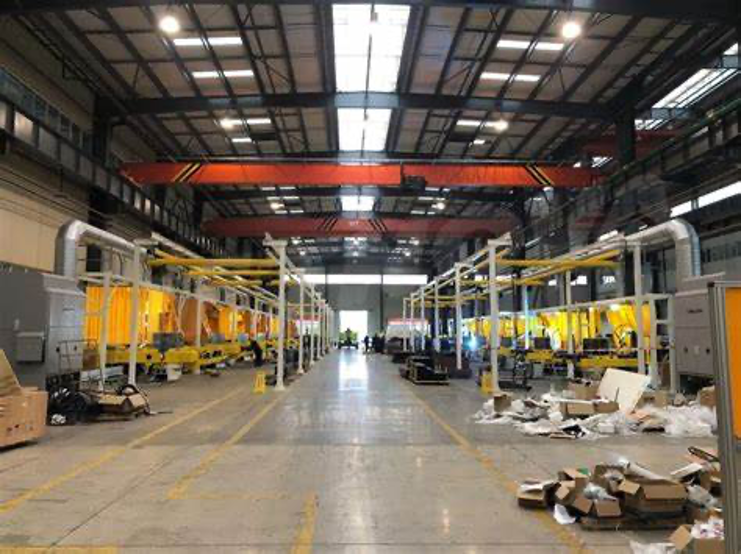
3. Applications Across Industries
Overhead cranes are essential in a wide variety of industries:
- Manufacturing: Moving raw materials, semi-finished and finished products
- Steel & Foundry: Handling heavy steel coils, molten metal ladles
- Automotive: Lifting engines and assembling vehicle frames
- Energy: Used in power plants, turbine assembly, and maintenance
- Warehouse & Logistics: Efficient indoor cargo movement and space optimization
4. Key Safety Measures for Overhead Crane Operations
Safety is critical when operating overhead cranes. Here are core precautions every operator and site should follow:
🛑 Pre-Operational Checks
- Inspect wire ropes, limit switches, brakes, and hook
- Ensure no abnormal noise or vibration during movement
🧯 Load Handling Safety
- Never exceed the rated load capacity
- Keep the load balanced and avoid swinging
- Use appropriate rigging techniques and certified lifting slings
👷 Operator Training & Access Control
- Only trained and certified personnel should operate the crane
- Install warning systems (horns, lights) to alert nearby workers
- Mark crane travel paths and restrict unauthorized access
🛠️ Scheduled Maintenance
- Follow a strict inspection and maintenance plan
- Record service logs and address wear-and-tear promptly
5. Why Choose Chinese Suppliers for Overhead Cranes?
As one of the world’s leading crane manufacturing bases, China offers:
- Reliable Quality: Compliance with CE, ISO, GOST, and other international standards
- Affordable Pricing: Cost-effective for global projects without sacrificing performance
- Customization: Tailored solutions based on project layout and lifting needs
- Fast Delivery & Support: Optimized production and experienced export handling
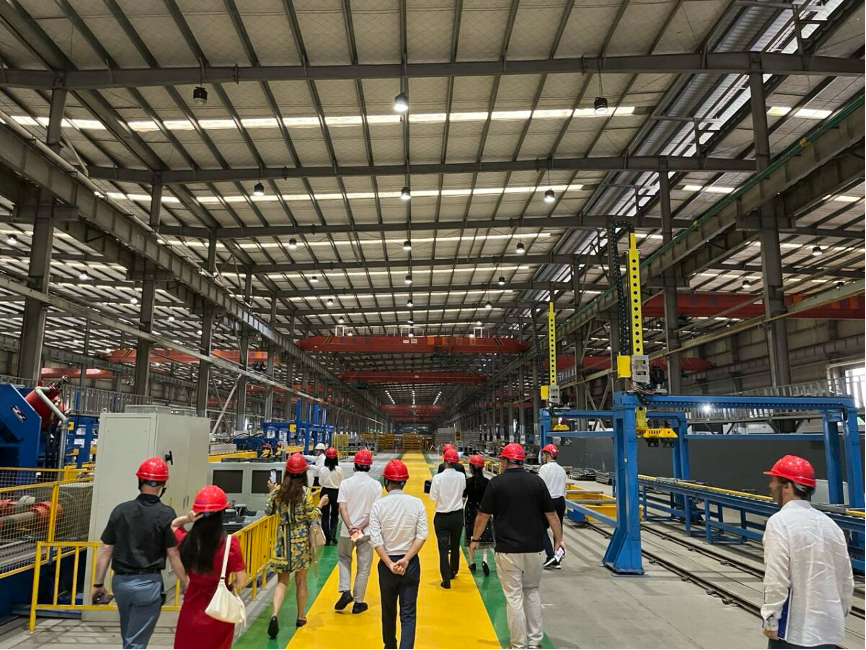
6. Your Trusted Partner for Industrial Lifting Solutions
Whether you’re building a new facility or upgrading your current lifting system, we provide a full range of overhead cranes and hoisting solutions. Our technical team can assist you with:
- Layout design and model selection
- Electrical and control system integration
- On-site or remote installation guidance
- Multilingual after-sales support

